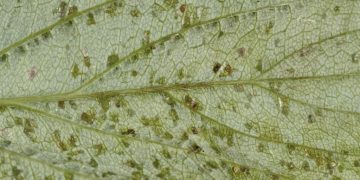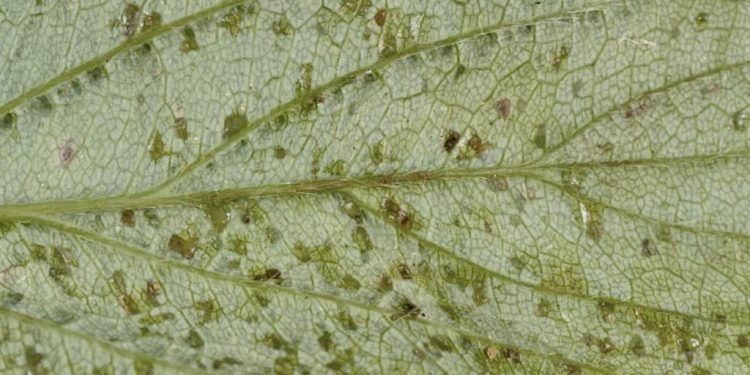#CropDisease #PlantProtection #Agriculture #XanthomonasControl #BacterialInfection #LeafSpotDisease
Xanthomonas leaf spot is a bacterial disease that affects a wide range of crops, including vegetables, fruits, and ornamental plants. The bacterium responsible for this disease is Xanthomonas campestris, which can cause significant damage to crops if left uncontrolled. In this article, we will discuss the development of Xanthomonas leaf spot, its consequences on crop production, and ways to combat this disease.
Xanthomonas campestris is a gram-negative bacterium that is commonly found in soil, water, and plant debris. This bacterium can infect plants through natural openings or wounds, and it can also spread through rainwater, irrigation, and contaminated equipment. Once inside the plant, Xanthomonas campestris will colonize the leaf tissue, causing the characteristic leaf spot symptoms.
The development of Xanthomonas leaf spot can lead to significant crop losses, especially in warm and humid environments. The symptoms of this disease include yellow or brown spots on the leaves, which can expand and merge, causing defoliation and reduced plant growth. In severe cases, Xanthomonas leaf spot can also affect fruit quality, leading to economic losses for growers.
To combat Xanthomonas leaf spot, farmers can use a combination of cultural, biological, and chemical control methods. Cultural practices such as crop rotation, pruning, and removal of infected plant debris can reduce the incidence and severity of this disease. Biological control agents such as Bacillus subtilis and Pseudomonas fluorescens have also shown efficacy in controlling Xanthomonas leaf spot. Finally, chemical control methods such as copper-based fungicides can be used to prevent the spread of this disease.
Xanthomonas leaf spot is a significant bacterial disease that can cause significant damage to crops. Understanding its development and consequences is crucial for developing effective control strategies. By using a combination of cultural, biological, and chemical control methods, farmers can reduce the impact of Xanthomonas campestris on their crops and maintain productivity.































